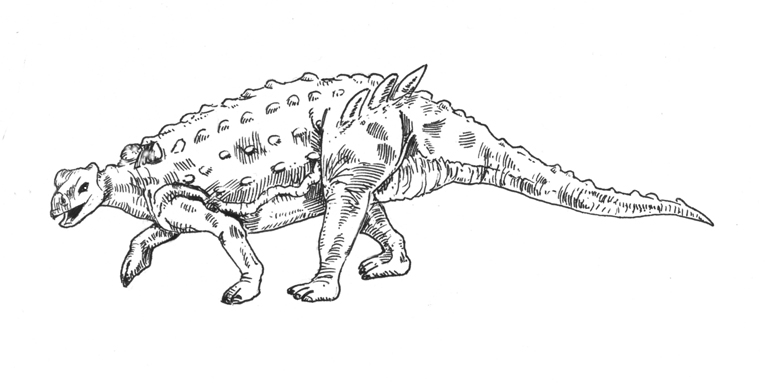New Study Suggests Duck-billed Platypus and Duck-billed Dinosaurs side by side in the Cretaceous
The Duck-Billed Platypus – The Oldest type of Mammal on the Planet?
The Platypus is a bizarre looking Australian mammal, one of the few monotremes left in the world – a mammal that lays eggs. When this strange looking creature, which can grow up to 50 centimetres long, was first studied by western scientists they thought the bill had been glued or sewn into place, few could believe that this animal was real and many dismissed drawings as total folly or an elaborate hoax. However, this highly specialised freshwater mammal rather than being an oddity might just have remained unchanged for 120 million years. This would make the humble Platypus one of the oldest kinds of mammal on the planet, with its origins now traced back to the middle of the Cretaceous.
A native of Australia, the Platypus uses its highly sensitive bill to find shrimps and worms underwater. When a Platypus dives it effectively becomes blind and deaf, the bill replaces these senses by detecting prey, first by touch and then by tiny sensors that can detect the faint electrical charges given off by living organisms. So effective is this device that an adult Platypus can eat up to half its own body weight in a single night. It needs to, as it requires a high calorie intake to maintain its active life style.
Scientists have known for some time that as a monotreme it shares a number of characteristics with reptiles. For example, the shoulder bones resemble those found in fossil Therapsid reptiles. Platypus sperm is thread-like, similar to a reptiles rather than being tadpole shaped and of course the Platypus lays eggs, just like a reptile.
Cretaceous Origins
However, a fossilised jaw under the study of Dr Tom Rich and his partner Professor Pat Vickers-Rich has been identified as belonging to a member of the Platypus family and as the jaw dates from 120 million years ago, this puts the little Platypus right in amongst the dinosaurs of the Cretaceous period.
Palaeontologists Dr Tom Rich from Museum Victoria and Professor Pat Vickers-Rich from Monash University have been searching the southern coastline of Victoria for the remains of early mammals for more than two decades.
New analysis of three jaw fragments found ten years ago at Flat Rocks, near Inverloch, Victoria, has enabled the husband and wife team to positively link the fossils to the Platypus family. Using a high resolution CT scanner in Texas the scientists discovered this ancient animal (named Teinolophos) had a large internal grove or canal along its jaw to help carry nerve fibres from the bill to the brain – just like a modern Platypus. This puts this ancient mammal into the same family as the Platypus, the Ornithorhynchidae.
Ancient Platypus
Dr John Long (Museum of Victoria) commenting on the results of the CT scans stated that when these tiny fossil jaws were first discovered, it was thought that they may have belonged to an ancient ancestor of the modern Platypus, a close relative but not an actual Platypus type creature. After all, the fossil jaws have teeth and the modern Platypus has none.
“But the recent discoveries made in the last week have shown with the high resolution CT scanner in Texas that some of these jaws that they found, they’re actually in the same family, Ornithorhynchidae, as the modern Platypus and this is absolutely outstanding,” Dr Long stated.
“It’s very interesting really because many of these early mammal groups had teeth,” Dr Long reported.
“It’s an ancestral condition for all mammal groups. But throughout the course of their evolution, as the bill became more important and more specialised for their feeding to find worms and things, eventually they didn’t need teeth and they could just devour their food with their bill.” For the scientists involved in this study it now seems that they can place the humble Platypus happily foraging streams and small rivers for food as dinosaurs such as the nodosaur Minmi and the fierce Allosaurus roamed the riverbank.
An Illustration of the Australian Nodosaurid Minmi
Picture credit: Everything Dinosaur
“Several kinds of mammals were living in the age of the dinosaurs, but none of those families, apart from the Platypus family, is still alive today,” Dr Long remarked. It means Australia has the oldest living family of mammals anywhere on the planet.”
The Platypus far from being some sort of accident of nature has proved itself to be a very capable survivor with the basic body plan remaining unchanged throughout the Age of Mammals. For a large part of the Cenozoic Australia has been cut off from other land masses and this has helped ancient animals such as the Platypus to survive to see the evolution and development of the human race. Ironically, the Platypus still can be found in Victoria, inhabiting streams just a few miles inland from where the ancient fossilised Platypus jaw bones were found.
The research is being published in the Proceedings of the National Academy of Sciences(Australia).
Perhaps young allosaurs and other theropods actively hunted ancient Platypus amongst the horsetails and primitive flowering plants in those times so very long ago.
A potential Platypus hunter, an Allosaurus and other dinosaur models: Dinosaur and Prehistoric Animal Models.


